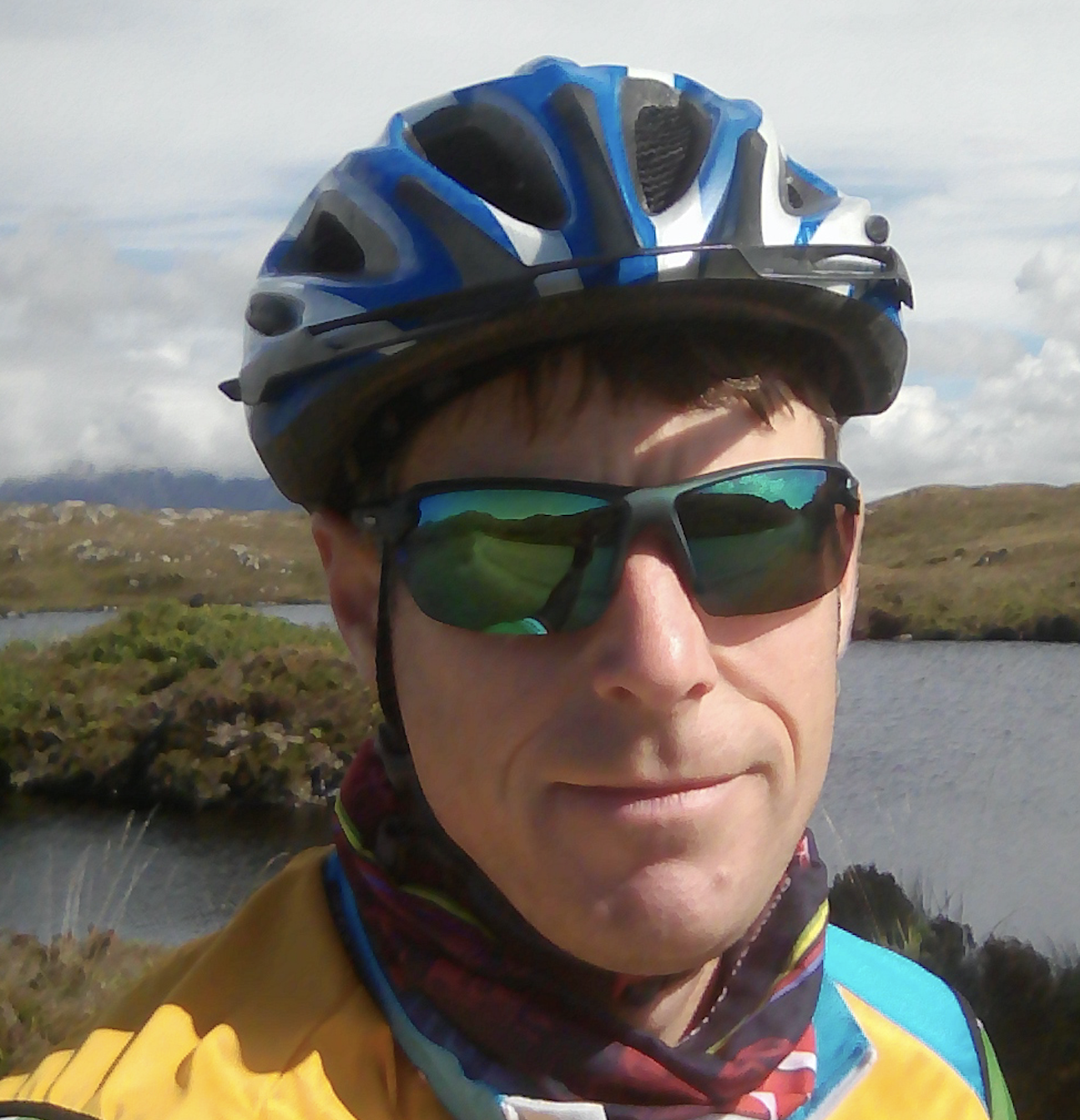Hidden amid the magnificent North West Highlands Geopark on Scotland’s wild west coast are the Inchnadamph Bone Caves. Visit the caverns and unearth incredible tales of the last Ice Age and the huge carnivores that once roamed these lands. On a windswept day it is easy to imagine these animals sheltering here.
Read on and learn all about the prehistory of the Bone Caves, today's wildlife, and a walk that delivers you right to the hollows.
Looking for more outdoor inspiration? Check out our guides to upland wildlife, the North Coast 500, and great hill walks.
Scotland's best walks
Explore the Highlands, Scottish Isles, Borders and more with our guide on the best walks in Scotland. Whether you're looking for long-distance Highland hikes, coastal treks or short river walks and loch-side strolls we have walking routes for all abilities.
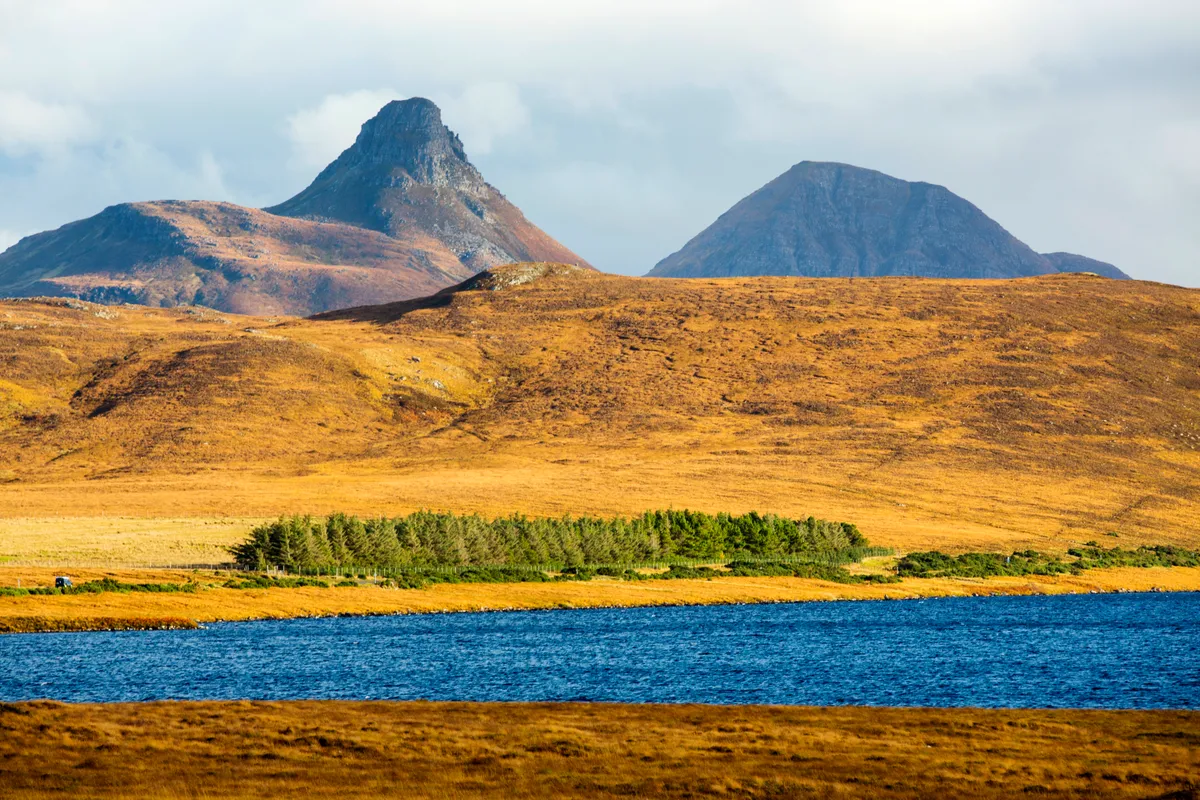
Inchnadamph Bone Caves prehistory
The north of Scotland houses many a mystery, but perhaps none more intriguing than that of the Bone Caves. Rewind 18,000 years and this landscape – along with much of the UK – was gripped in the clutches of Britain’s last ice age, and dominated by large apex predators, such as lynx, wolves and even polar bears.
Yet, unlike the surrounding lands, the elevated and retreated position of the caves left them untouched by the vast ice sheets that scraped their way through the valleys below. And so it was that in 1927 cavers excavated the bones of what is now understood to be the remains of the last-known wild polar bear in Britain.
Now protected by Scottish Natural Heritage, these caves offer a unique window into Scotland’s prehistoric past and complex geology, and provide a great focal point for a winter wander.
Discover more around Inchnadamph
With arguably the best of the spectacular North Coast 500 road route stretching out ahead, and the iconic ruins of 15th-century Ardvreck Castle and nearby Calda House on Loch Assynt, you’ll find plenty more to do in the area once you’ve finished exploring the caves.
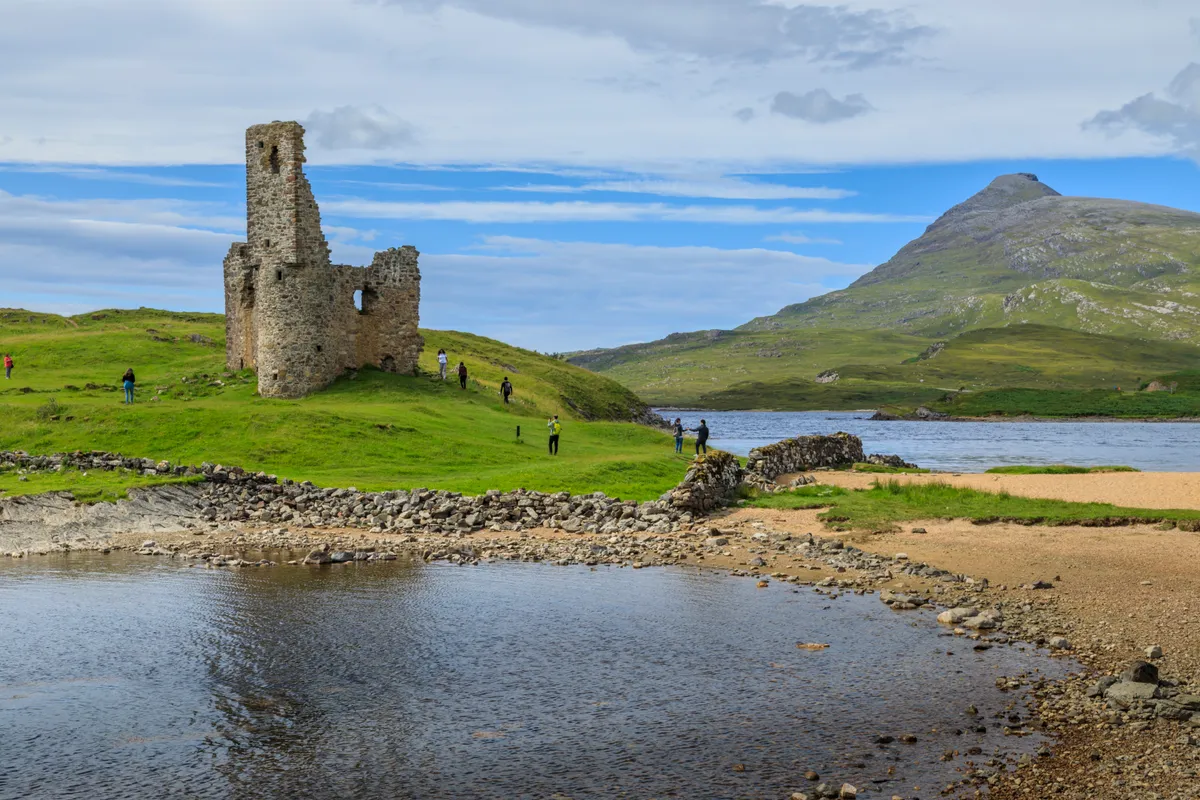
Inchnadamph wildlife
The remote, windswept landscape of Assynt attracts a variety of flora and fauna rarely seen elsewhere in the UK.
Inchnadamph is the largest area of limestone in Scotland, making it a haven for wildflowers in spring and summer, including mountain avens, globeflowers, serrated wintergreens and holly ferns. Look out too for majestic golden eagles, flocks of golden plovers, roaming red deer and maybe even the odd mountain hare in the lower lands of Assynt, camouflaged against the snow in its glorious white winter coat.
Brent and barnacle geese are increasingly frequent winter visitor and may be seen in flight. Another rare visitor at this time of is the snow goose.
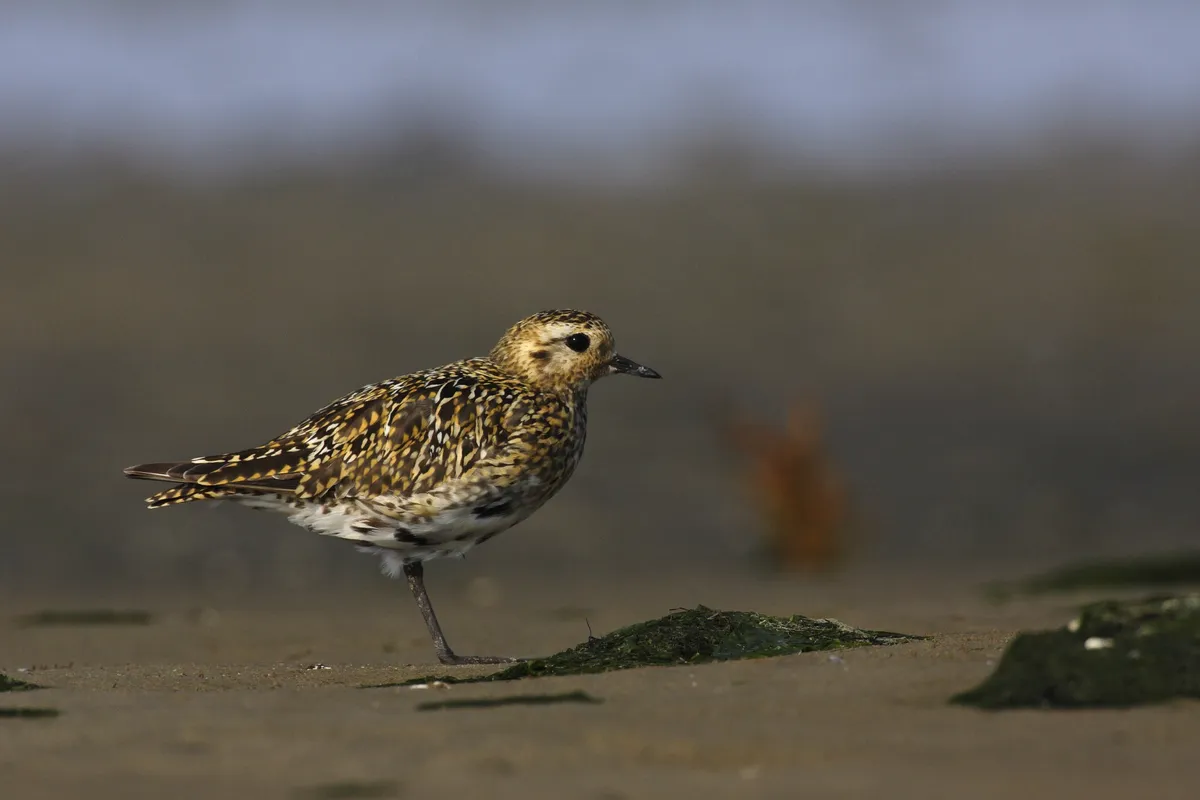
Inchnadamph Bone Caves walk
2.8 miles/4.5km | 2 hours | moderate | 200m ascent
An easy walk leads up a pretty limestone glen to below the caves, which can be entered after a short but strenuous ascent. Overlooking the geopark, the mouths of these limestone caverns offer an unrivalled picnic spot amid a quiet mountain tranquillity that is hard to beat.
1. Start
From the car park, signed with the Geopark logo of a Celtic knot, walk through a gate to follow a landrover track by a building before joining a path that runs alongside the Allt nan Uamh. A pretty little waterfall is soon passed beside which grow hardy silver birch.
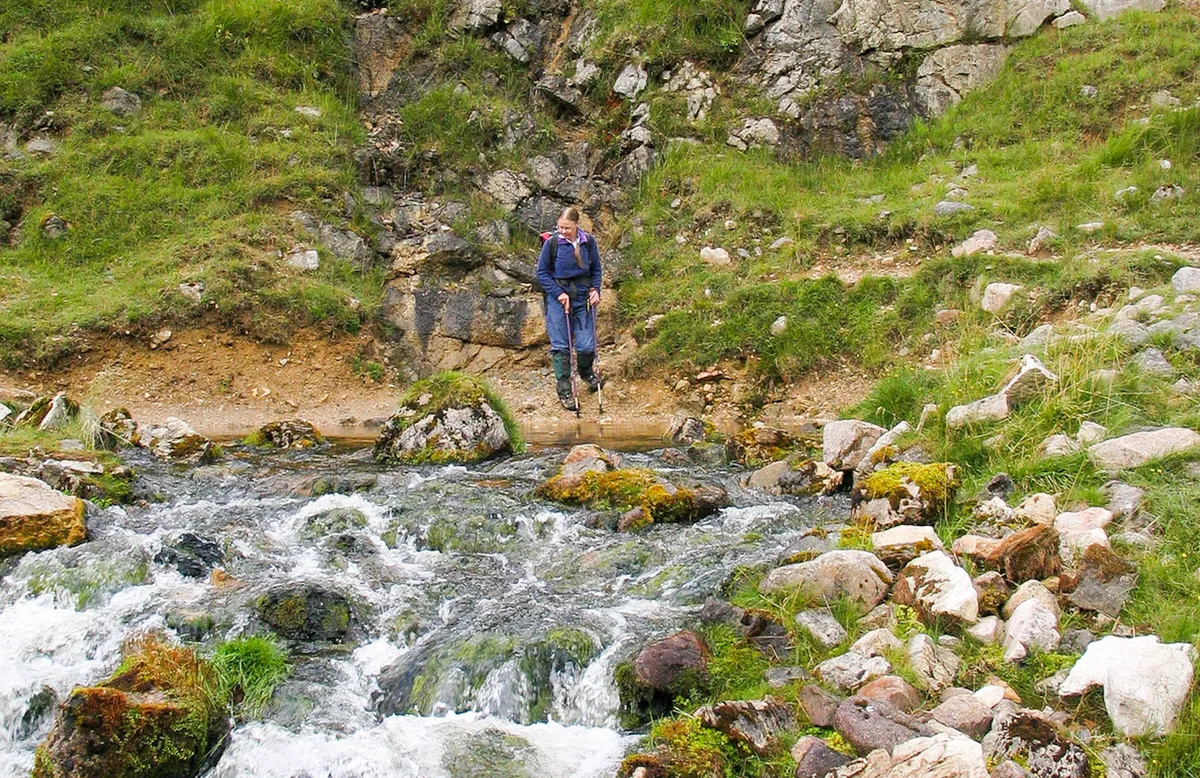
2. Fuaran Allt nan Uamh
The path up the glen leads by a large spring, the Fuaran Allt nan Uamh, which flows from below a crag and into the adjacent river. If you look closely you will spot a second spring by the river a little further on. Depending on recent rainfall the river may be dry above this point.
As the valley narrows the caves become visible on a cliff ahead. Where the path forks, at a rock, go right to cross the river. The obvious path leads up, quite steeply, to the first of the caves.
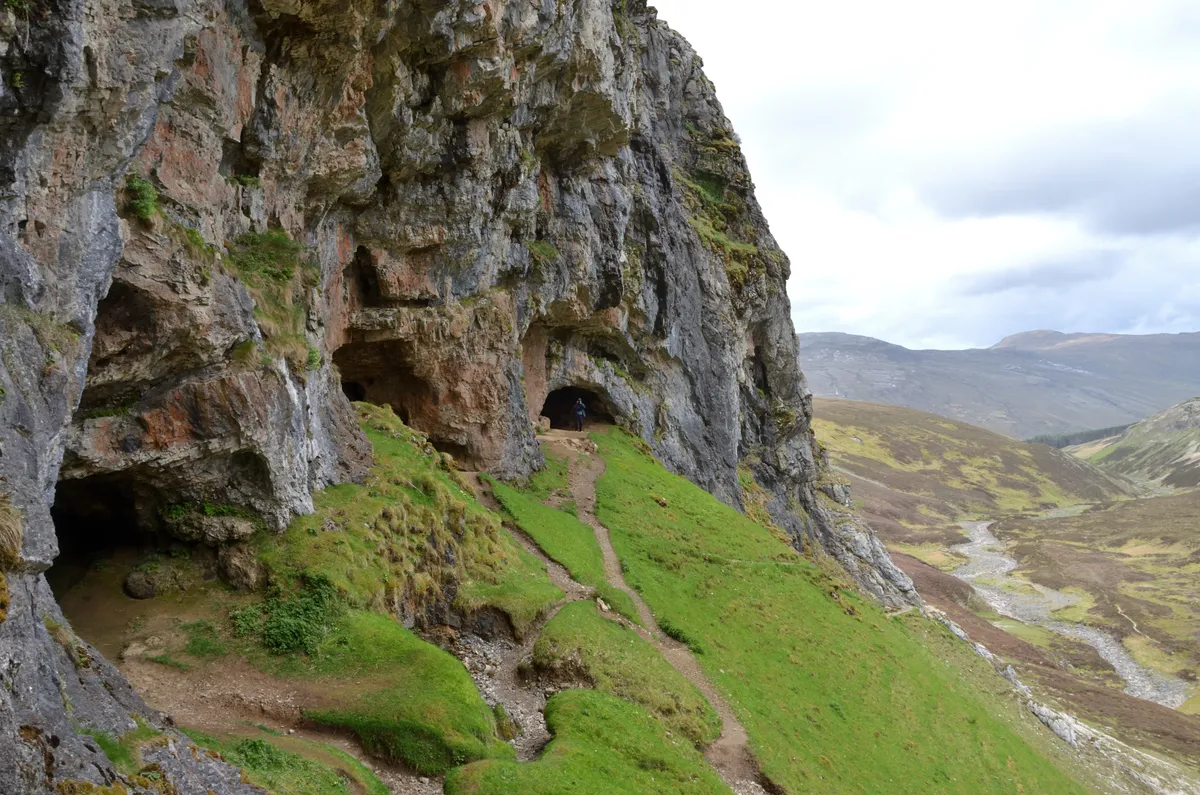
3. Bone Caves
There are three main caves, about five metres deep and high enough to stand upright. A torch is recommended. There is also a shallower rock shelter. Be careful as the floors are slippery.
The geologists Peach and Horne explored these caves and, in 1889, they partially excavated one where they found animal bones. More thorough excavations in 1927 uncovered remains of the only northern lynx site in Scotland, and those of brown bear, polar bear and ox. Human remains, dating back some 4,700 years were also found. And, almost a thousand reindeer antler fragments were found, aged from 8,300-47,000 years old. Some of the findings can be seen at the National Museum of Scotland in Edinburgh.
Follow the path that leads on across the steep slope to trend downhill below the caves.
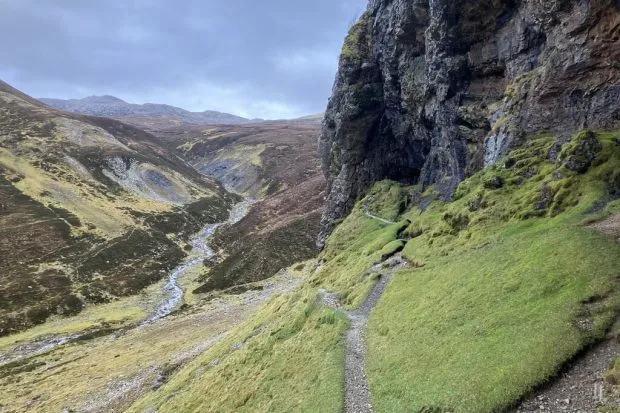
4. Burn return
Cross a burn before making your way down to the glen; follow this downhill, looking for mountain hare in their white winter coats, an russet red deer on the hillsides.
The return, giving good views of the caves, soon rejoins the outward section. Retrace your steps to the car park.
Guide to Assynt
Whether you like wild walking, wildlife watching or simply wandering on empty beaches, Assynt offers a taste of Scottish wilderness.

Inchnadamph Bone Caves map
Inchnadamph Bone Caves walking route and map
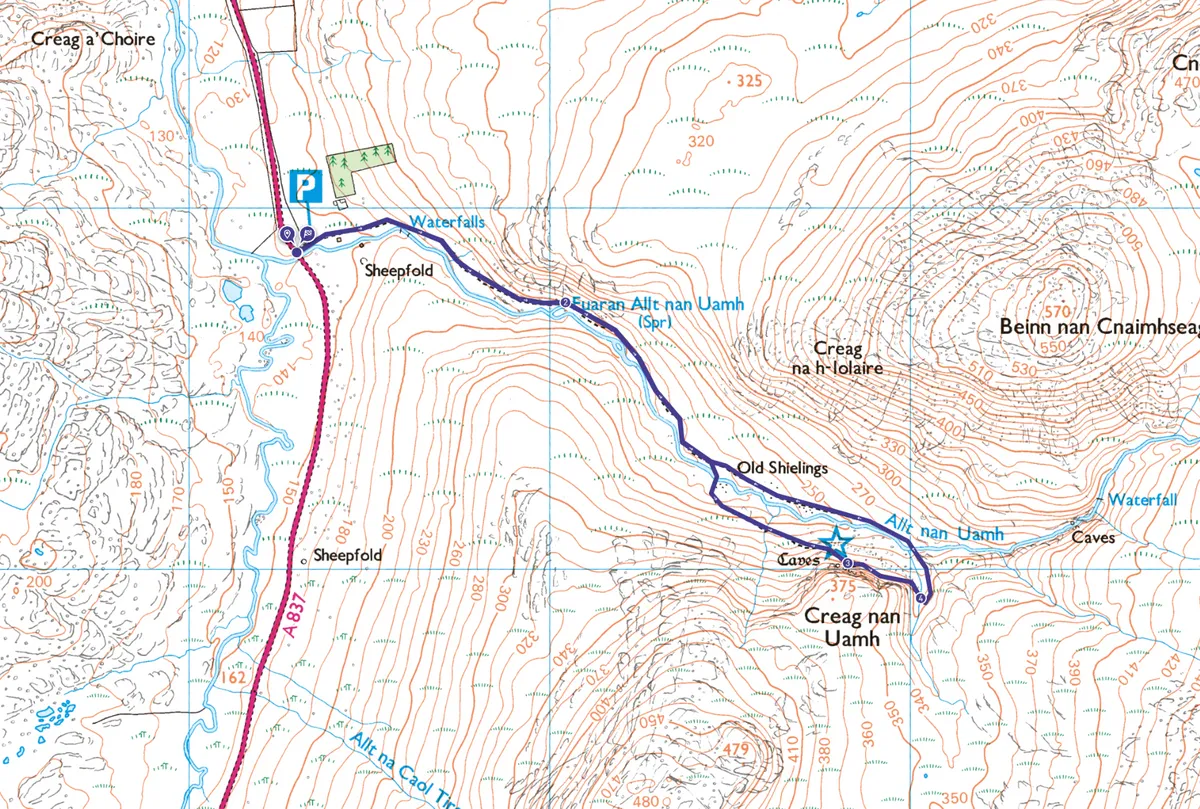
Useful information
Starting point
Parking area 2.5 miles (4km) south of Inchnadamph and 3.6 miles (5.8km) north of Ledmore Junction, off the A837, at grid reference NC 253179. Nearest post code (for general areas only) is IV27 4HN.
Terrain
Valley path with very steep section to caves. Two riverbed crossings, which are dry except after heavy rain.
Map
OS Explorer 442
Eat/drink
Pick up a delicious award-winning pie or two from the Lochinver Larder.
Cave access
The free-to-access caves can be reached by a steep climb on a narrow path, which is fine for most competent walkers.

